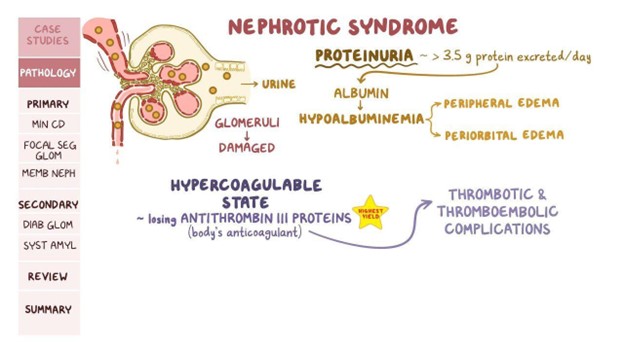A nurse is preparing to administer amoxicillin 30 mg/kg/day divided equally every 12 hr to a toddler who weighs 33 lb. Available is amoxicillin 200 mg/5 mL suspension. How many mL should the nurse administer? (Round the answer to the nearest tenth. Use a leading zero if it applies. Do not use a trailing zero.)
The Correct Answer is ["5.625"]
To calculate the dose of amoxicillin for the toddler:
Step 1: Convert the toddler's weight from pounds to kilograms.
33 lb ÷ 2.2 (lb to kg conversion factor) = approximately 15 kg
Step 2: Calculate the total daily dose of amoxicillin.
Dose = 30 mg/kg/day × 15 kg = 450 mg/day
Step 3: Divide the total daily dose into equal doses every 12 hours.
450 mg/day ÷ 2 doses = 225 mg/dose
Step 4: Calculate the amount of amoxicillin suspension needed for each dose.
The available concentration is 200 mg/5 mL, so for 225 mg, you would use the proportion:
225 mg : 200 mg = x mL : 5 mL
Cross-multiplying: x = (225 mg × 5 mL) / 200 mg ≈ 5.625 mL
Therefore, the nurse should administer approximately 5.625 mL of amoxicillin suspension for each dose.
Nursing Test Bank
Naxlex Comprehensive Predictor Exams
Related Questions
Correct Answer is ["2"]
Explanation
The nurse should administer 2 tablets.
Here's the calculation:
650 mg / 325 mg per tablet = 2 tablets
Since the nurse should administer a whole number of tablets, the answer is 2 tablets.
Correct Answer is C
Explanation
A. "We worry about surgery. Do you think we should investigate direct donation of blood?"
Explanation: This statement doesn't show a clear understanding of nephrotic syndrome. Nephrotic syndrome is a kidney disorder that involves the kidneys' ability to filter blood, but it doesn't typically involve blood donation or surgery related to that. Direct donation of blood is not relevant to the treatment or management of nephrotic syndrome.
B. "We'll have to encourage lots of liquids. Did you say about Biters per day?"
Explanation: This statement suggests a misunderstanding of nephrotic syndrome and its management. Encouraging lots of liquids is generally not a primary concern in nephrotic syndrome. In fact, excess fluid intake might be counterproductive, as it could worsen edema (swelling) that often occurs with this condition. Additionally, the term "Biters per day" doesn't seem relevant to nephrotic syndrome or its management.
C. "My child really likes chips and bologna. I guess we will have to find something else."
Explanation: This statement indicates an understanding of dietary considerations related to nephrotic syndrome. Nephrotic syndrome involves protein loss through the urine, which can lead to low protein levels in the blood. To address this, dietary changes are often recommended to include foods rich in protein. Avoiding high-sodium foods like chips and bologna is also important, as excessive sodium intake can contribute to fluid retention and worsen edema.
D. "We understand the need for antibiotics, hope they can be given orally."
Explanation: This statement doesn't relate to nephrotic syndrome or its management. Nephrotic syndrome primarily involves issues with kidney function and protein loss, and antibiotics are not a standard treatment for this condition. Antibiotics are used to treat infections, which can sometimes be a complication of nephrotic syndrome due to the immune system's vulnerability, but the statement doesn't focus on the understanding of the disease itself.
Correct Answer: C. "My child really likes chips and bologna. I guess we will have to find something else."
Explanation: This statement shows an understanding of the dietary changes needed for a child with nephrotic syndrome. It acknowledges the importance of adjusting the child's diet to include protein-rich foods and avoid high-sodium options, which aligns with the nutritional considerations for managing nephrotic syndrome.

Whether you are a student looking to ace your exams or a practicing nurse seeking to enhance your expertise , our nursing education contents will empower you with the confidence and competence to make a difference in the lives of patients and become a respected leader in the healthcare field.
Visit Naxlex, invest in your future and unlock endless possibilities with our unparalleled nursing education contents today
Report Wrong Answer on the Current Question
Do you disagree with the answer? If yes, what is your expected answer? Explain.
Kindly be descriptive with the issue you are facing.
